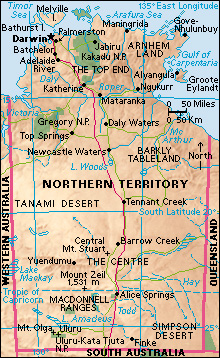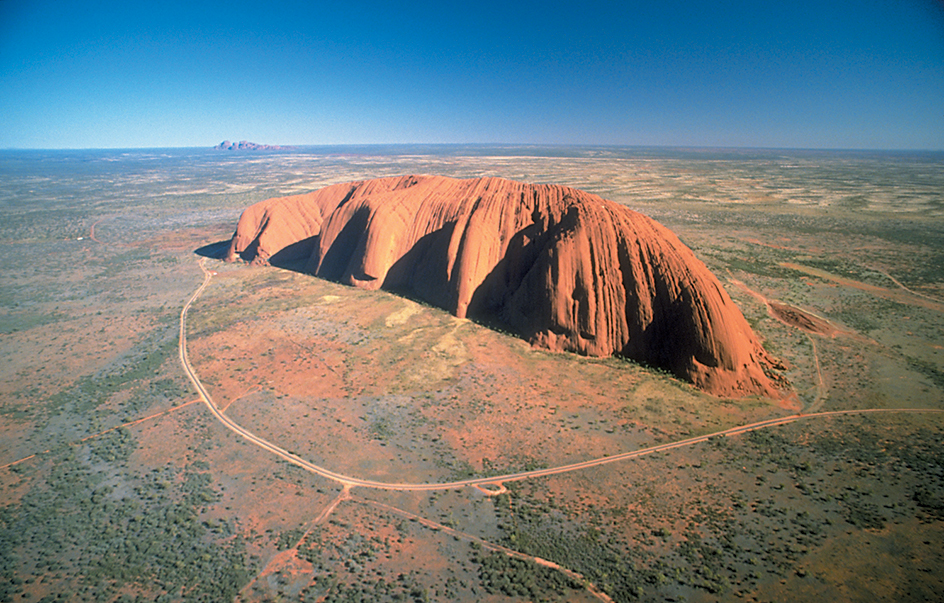Kata Tjuṯa, also known as the Olgas, is a group of large, rounded rock outcrops in Australia. The rocks lie 20 miles (32 kilometers) west of Ulu (also known as Ayers Rock) in Australia’s Northern Territory. Kata Tjuta consists of 36 outcrops, also called domes. They cover 10 square miles (26 square kilometers) and are surrounded by a sand dune plain. Mount Olga, the highest dome, rises 3,507 feet (1,069 meters) above sea level. 
Kata Tjuṯa formed from the massive Mount Currie Conglomerate, a sedimentary rock of the Cambrian Period more than 500 million years old. The conglomerate rock consists of rounded pebbles and boulders cemented together. Erosion probably began to form the domes during the Cretaceous Period, from about 145 million to 66 million years ago.
The Kata Tjuṯa area lies within the traditional lands of the Anangu Aboriginal peoples. Aboriginal people are among the Indigenous (native), or First Nations, peoples of Australia. Kata Tjuṯa means many heads in Pitjantjatjara, an Anangu dialect (language variant). The rock formation is a spiritual and cultural landmark for the Anangu people.
In 1872, members of an expedition led by the British-born explorer Ernest Giles became the first non-Aboriginal people to encounter Kata Tjuṯa. At the suggestion of the expedition’s sponsor, the German botanist Baron Ferdinand von Mueller, Giles named Mount Olga in honor of Queen Olga of Württemberg (now part of Germany). Mount Olga and its surrounding domes later became collectively known as the Olgas.
Beginning in the 1940’s, the Olgas and Ayers Rock became popular tourist attractions. The two sites were merged in 1958 to form Ayers Rock-Mount Olga National Park. In 1985, the Australian government recognized the Anangu people as the traditional owners of the land on which the park stands. The United Nations Educational, Scientific and Cultural Organization (UNESCO) added the national park to its World Heritage List in 1987. The UNESCO World Heritage List recognizes areas of cultural or natural importance. The park was officially renamed Uluru-Kata Tjuta National Park in 1993. 
